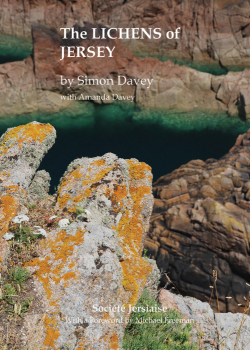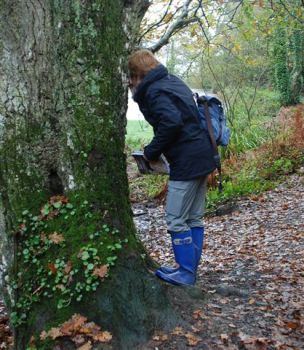The joy of launching a new book!
Posted on
 In November 2015, Simon and Amanda Davey had the great joy of being able to attend the launch of their book The Lichens of Jersey at the Société Jersiaise. A book that had taken many years to come together, it was launched in style by the publishers with many of the attendees having been key players in the evolution of the project from ideas for a small booklet into the full-blown colour book that it was to become.
In November 2015, Simon and Amanda Davey had the great joy of being able to attend the launch of their book The Lichens of Jersey at the Société Jersiaise. A book that had taken many years to come together, it was launched in style by the publishers with many of the attendees having been key players in the evolution of the project from ideas for a small booklet into the full-blown colour book that it was to become. The afternoon preceding the launch was spent with Anne Haden, who was one of the several driving forces behind the publication of the book. Clutching her copy in one hand, handlens in another, it was a joy to spend such quality time with her even in soggy, muddy November conditions. It was hugely warming to see the book ‘in action’ in the field and to introduce Anne to the many and several photographic models illustrated in the species section. This section was laid out on purpose to allow at least some comparison between similar species without having to flick through too many pages and it seemed to work helpfully!
The afternoon preceding the launch was spent with Anne Haden, who was one of the several driving forces behind the publication of the book. Clutching her copy in one hand, handlens in another, it was a joy to spend such quality time with her even in soggy, muddy November conditions. It was hugely warming to see the book ‘in action’ in the field and to introduce Anne to the many and several photographic models illustrated in the species section. This section was laid out on purpose to allow at least some comparison between similar species without having to flick through too many pages and it seemed to work helpfully!
Jersey is a wonderfully complex island with a variable geology and many different habitats. For this reason it manages to have a significant number of lichen species even considering the relatively small area and the count at the time of the book being put together was 546 species for an area just short of 120 square kilometres. This is an impressive score.
Aside from the beauty of the lichens on the island as a factor behind the book’s ‘look’, another key consideration was the significance of a well-known name in lichen research: Charles du Bois Larbalestier. Born in 1838 in St Aubin to a sea captain and his wife, Larbalestier was to become a significant source of type specimens of lichens named to science by the Finnish specialist William Nylander, based in his prime in Paris. Many of the lichens found in Jersey by Larbalestier form the type specimens and he added to this in the 1870s in Ireland by finding many more lichens then new to science. An elusive and intriguing character, he taught the wayward future Seigneur of Sark as well as many others on their way up to Cambridge. The book contains a chapter on the history of lichenology in Jersey and its relevance to European and world taxonomy.
At the launch there were a good number of people who had little if any awareness of lichens prior to the publication of the book. Some had become interested through the historic importance of Charles du Bois Larbalestier. Some had become interested because lichens really are very beautiful. Many were developing their interest because they now had a book that could guide them gently in a fascinating group that can seem quite intimidating. It is lovely to hear that Anne Haden has already been taking people out for lichen walks.
It was a joyful launch indeed!
The Lichens of Jersey was published by the Société Jersiaise in 2015 and is available for sale through Tilia Publishing UK for £15 plus postage and packing.

Add a comment: